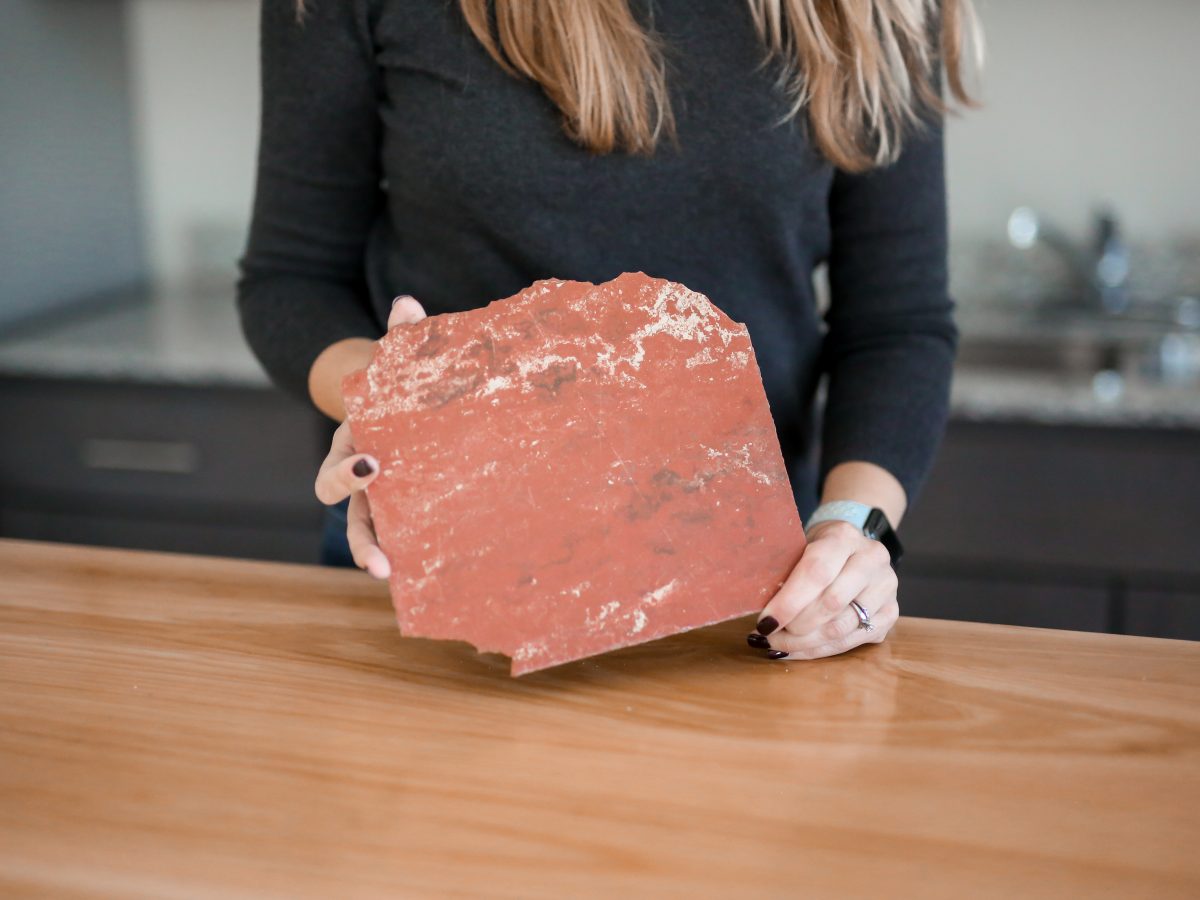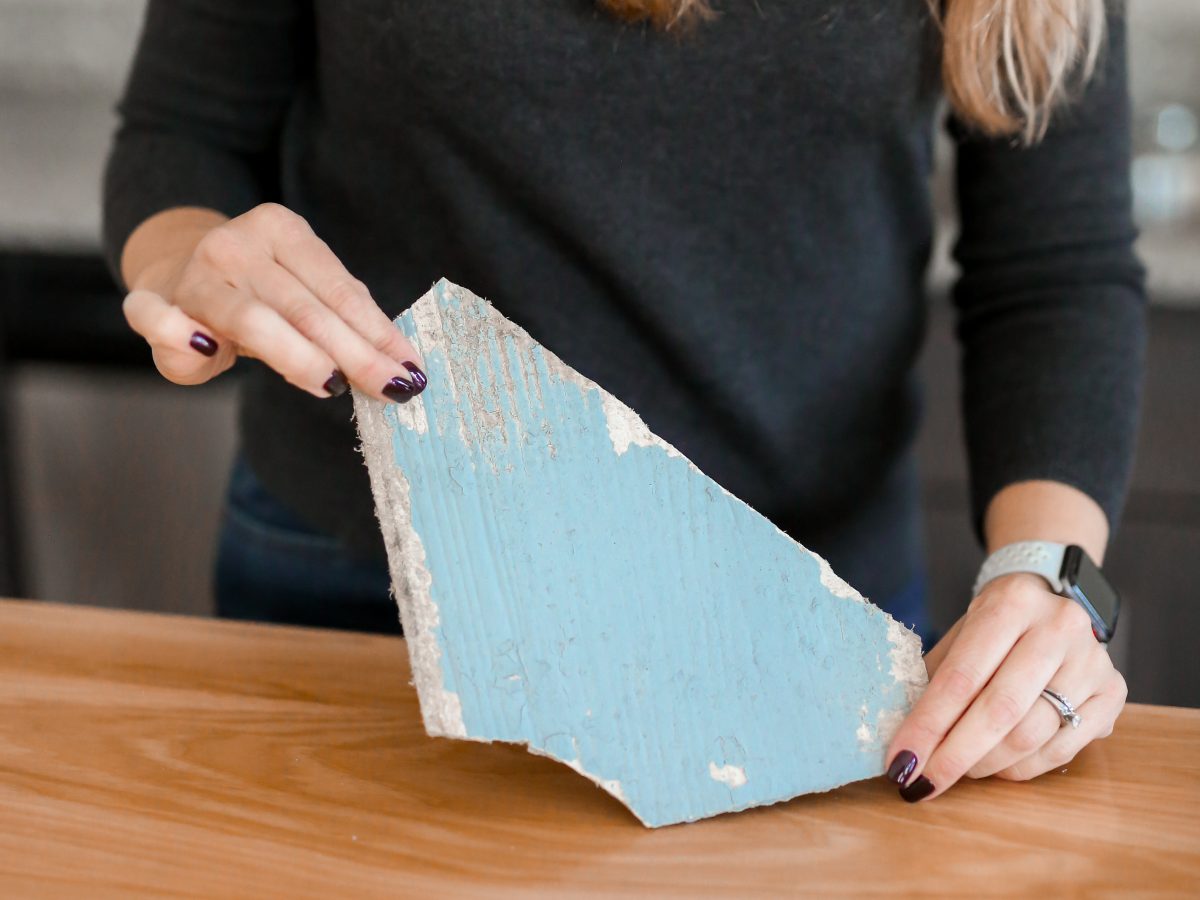Asbestos in Your Home?

Asbestos was a common building material used in commercial and industrial buildings, schools, and homes prior to the 1980s. This material was widely used because of its durable nature, and it is found all over the planet. In 1989 the Environmental Protection Agency (EPA) filed a partial ban on the manufacturing, importing, processing, and distribution of some asbestos containing materials (ACMs). The bad news: ACMs are still used in commercial and industrial buildings today. Fortunately the use of these materials in residential buildings and schools has drastically decreased since the ban. If your house was built prior to 1989 chances are there may be some ACMs hidden away, which brings up some important questions: what are common asbestos containing materials, and how do I take care of them?
First let’s investigate some commonly used asbestos containing materials:
- Cement board siding.
- Roofing felt.
- Insulation surrounding piping or duct.
- Vinyl floor tiles.
- Texture paint.
- Vermiculite insulation.
- Ceiling tiles.
- Mastic/glue under vinyl flooring.
- Linoleum.
- Plaster.
Below are some images of some of the more common materials that contain asbestos. The left image demonstrates common duct insulation you might find in your home. The middle image shows a common floor tile design that contains asbestos. The rightmost image is what piping insulation used in commercial and residential settings looks like.



One of the reasons asbestos was used in many of these materials was because of it’s high heat resistance and durability. Which made it a great source to use in areas that are meant to maintain stable temperatures for long periods of time. It is great for insulating houses and commercial buildings because it can keep indoor temperatures comfortable, while also keeping building costs low.
Keep in mind, though, that this is not an exhaustive list, so it is crucial to investigate before disturbing building materials. Reach out to a certified, trained, and accredited asbestos professional, like AAA Lead Inspections if you have any further questions about any of the materials listed, or if you would like to learn more about other ACMs. The material in question poses a threat if damaged and in a high traffic area. Contain the material with plastic wrapping if possible, otherwise limit access to the area, then call AAA. It is best to deal with these problems calmly and as quickly as possible to avoid further damage and exposure.
Keep in mind that exposure can also come from outside of your home. Listed below include other forms of exposure:
- Automotive parts
- Industrial materials
- Building materials from nearby construction sites
- Occupations
- Construction
- Lab testing
- Automotive workers
- Industrial workers
- Miners
- Military service

Why limiting exposure is great for your health:
Naturally formed and commonly found in serpentinite, ultramafic, and mafic rocks makes asbestos widely abundant across the globe. There are many ways asbestos causes diseases, the most common of which is by inhaling fibers through the nose or mouth. One of the more dangerous asbestos-related cancers is mesothelioma. Chronic exposure may lead to mesothelioma, and what causes major concern is that it affects the inner soft tissue lining of the lungs and abdominal cavity. The cells that reside within these tissues are crucial for nutrient exchange and protection, and other crucial survival functions, so without them, your health may rapidly decline. Some cancers can take decades to form, while others not as long, and with varying symptoms, it may be difficult to pinpoint which disease may be present.
Other illnesses caused by chronic asbestos exposure:
- Lung cancer: malignant cells found in the lungs.
- Reproductive cancers: ovarian cancer, prostate cancer, and testicular mesothelioma.
- Pleural plaque: areas of fibrous thickening of the tissues surrounding the lungs.
- Pleural effusion: a build up of fluid that causes difficulty breathing.
- Laryngeal cancer: malignant cells found in the larynx. Associated alongside this disease are sore throat and ear pain.
- Asbestosis: causes lung tissue inflammation and progressive scarring, which can lead to difficulties breathing.
It is important to check with your doctor regularly to update your health information in the event something changes. It takes a long time to develop any sort of symptoms related to asbestos exposure (10-15 years at the shortest!), so if you work in or around one of the environments mentioned above, consider making a visit to your doctor.

If asbestos is so dangerous, why is it such a popular material?
The ancient Egyptians first discovered asbestos and used it in mummifications because it has incredible resistance to corrosion. In fact, its resistance is so high that the human body cannot break down the fibers. So, if exposure occurs, the fibers stay within the soft tissues in your organs—the reason why it’s such a huge health concern! Apart from its incredible strength and durability, asbestos was used as a fire retardant. It’s resistant to water and chemicals, mixing with concrete or vinyl makes asbestos fibers much stronger, plus it’s a naturally occurring material so it’s cheap to use. With all these incredible properties, it’s no wonder it was the go-to material during the industrial revolution. Since the 1970s steps have been taken to ensure our health and safety, and since then, manufacturers have come up with alternatives to using asbestos in building materials.
These newer materials are more eco-friendly and recycle older materials, helping to reduce waste.
- Cellulose fiber: composed of ~80%-90% recycled paper that is mostly newspaper. Used for dry-mix mortars, tile adhesives, joint fillers, levelling compounds, waterproofing, and cement texturing/ rendering to name a few uses.
- Flour fillers: epoxy fillers made by mixing resin and flour shells from pecans, wheat, or rice to create a strong sealant.
- Amorphous silica fibers: though generally not used in residential buildings due to the high amount of fiberglass, these heat and cold resistant fabrics are strong insulators and work well to keep stable building environments.
- Polyurethane foams: used primarily for roofing insulation because they are great for quickly applying foam over large areas. These foams are poor heat conductors, so they keep temperatures comfortable indoors, plus they are great for sealing out the harsh exterior environment.
To help identify possible ACMs within your home, reach out to AAA Lead Inspections today!